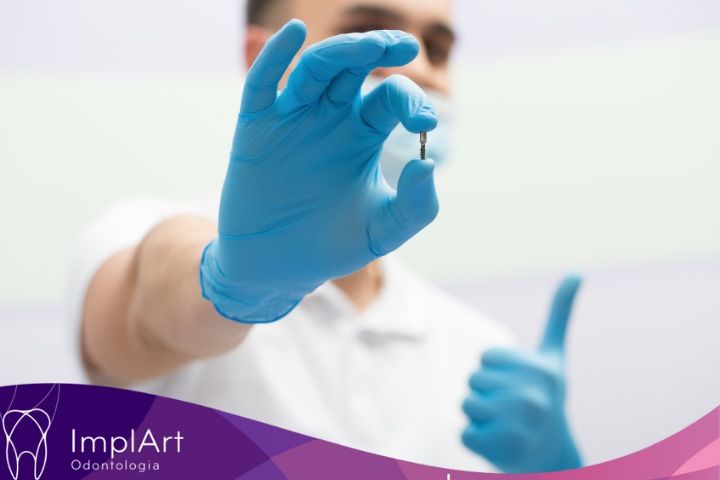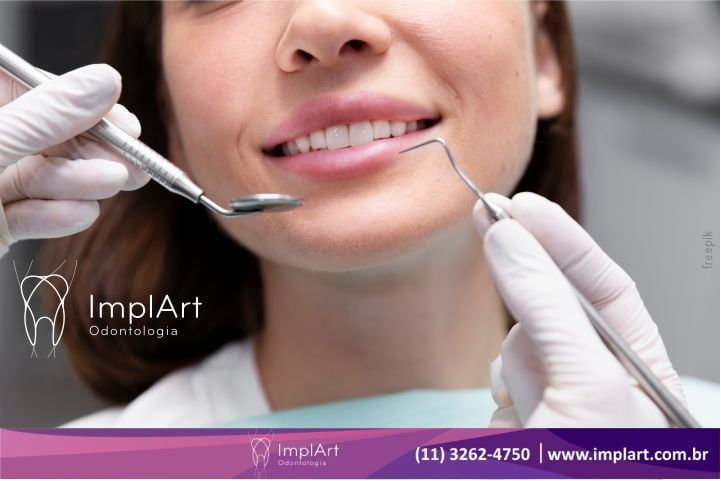What is dental implant surgery like?
Dental implant surgery is not a complicated process. Certainly, with current techniques, it’s a common procedure with no unforeseen problems. Implant surgery can take as little as half an hour in the simplest cases, is done in the clinic, in the implant dentist’s own office, with local anesthesia and the patient feels no pain.
Here at the ImplArt Clinic, we get a lot of questions from patients, especially about how dental implants are done in practice. So, to answer this and other questions about implant surgery, we’ve prepared this article to answer all your doubts about the treatment.
What is the best dental implant?
Today there are various types of dental implant with different technologies and healing times. There are even implants that heal in 30 days, called fast-healing implants, such as the Slactive implant, from the Swiss company Straumann, which is a fast-healing dental implant. In addition to this implant, there is the option of the ceramic implant, the only zirconia implant available on the market that is titanium-free and more biological, making it an excellent option for those who don’t want to have metals installed in their mouths.
This ceramic dental implant option has been increasingly sought after at Clinica Dentaria Implart by patients who want metal-free implant treatment.
Dental implant surgery can also be performed with intravenous sedation, for those patients who have a phobia of dentists, or even for those looking for extra comfort.
How to do a dental implant procedure
Is it dangerous to have dental implants? Dental implant surgery is a more straightforward procedure than you might think
Dental implant surgery is a safe procedure, and increasingly has more modern resources to make it faster and more comfortable. Here at Clinica Dentaria ImplArt, we have modern systems and expertise.
Here’s a step-by-step guide to the implant procedure:
- Step 1 – The procedure consists of making a small incision in the gum in order to expose the bone bed. The dentist needs to have good access to the area in order to install the implant correctly. If the dental implant surgery is performed with a Surgical Guide, it will be a blunt dental implant surgery
- Step 2 – Small drills are then used to perforate the bone. The process is carried out in such a way as to progressively expand the cavity so that it can receive the implant of the size selected by the dentist.
- Step 3 – The implant is then inserted into the cavity and given a protective cap.
- Step 4 – The area is sutured, or in cases of Guided Surgery, the surgery is completed without the need for stitches.
Are you afraid of dental implant surgery?
Find out what resources are available at the ImplArt Dental Clinic so that you can have a very smooth surgery.
Watch the video below explaining how dental implant surgery is performed:
In the classic implant treatment, the pin is surgically fixed into the bone and then the gum is sutured. The site is left to rest for around one to six months, depending on the type of implant used. The implant screw remains inside the bone tissue and must therefore undergo the osseointegration process, protected from chewing forces and food residue.
Shortly after the waiting period, a small cut is made in the gum and then the implant receives a piece called a healer, this process is called reopening. The implant cap can remain exposed in the mouth while the implant heals. Afterwards, the healer is removed without anesthesia (because it is not necessary), and a metal abutment is adapted to receive the prosthesis.
Recovery from dental implant surgery / after dentalimplants?
During the rest period, the patient can use a temporary prosthesis for day-to-day activities. This also helps prevent bone resorption, which would require the use of bone grafts in the future. In some selected cases, the implant can be inserted without cutting, through a small circular opening made in the gum.
This greatly favors the healing of the area as well as patient comfort. Implant surgery should be performed by a dentist specializing in implant dentistry, who certainly has the experience and knowledge in the field to determine the best treatment for each patient. In order to have a good post-operative period, people who undergo this procedure should follow the dentist’s instructions, take care of their oral hygiene and avoid smoking, which can compromise the success of dental implant treatment.

After dental implant treatment, it is always important to carry out cleaning and prophylaxis every 6 months, as a way of looking after the results achieved and monitoring oral health.
Get in touch with us to schedule your appointment or ask any questions you may have. We at the ImplArt Dental Clinic are here to help you!


 Agende sua consulta agora por WhatsApp
Agende sua consulta agora por WhatsApp












